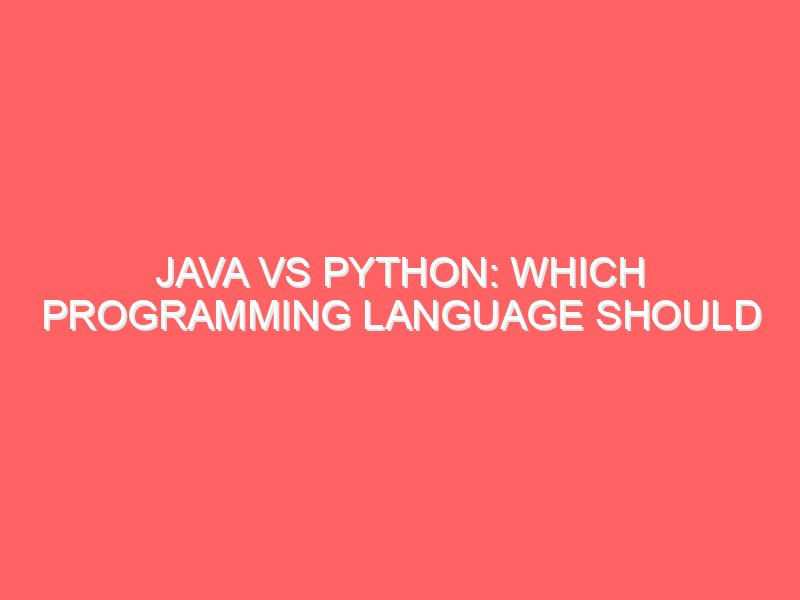
Introduction to AI-Generated Virtual Worlds
In recent years, the convergence of artificial intelligence and virtual environments has given rise to what is commonly referred to as AI-generated virtual worlds. These intricate digital landscapes represent a significant leap forward in the realm of immersive experiences, tapping into the vast potential of AI to create dynamic, adaptable, and engaging environments. With rapid advancements in computational power and machine learning algorithms, designers and developers can now construct virtual realities that not only respond to user interactions but also evolve based on collective behaviors and patterns.
The significance of AI-generated virtual worlds in our contemporary digital landscape cannot be overstated. They serve as meeting places for social interaction, platforms for creative expression, and spaces for personalized experiences in the ever-expanding metaverse. Such environments offer enhanced opportunities for individuals and organizations to engage with their audiences in ways that transcend traditional forms of interaction. Consequently, this evolution allows for innovative educational, entertainment, and commercial applications, thereby reshaping how we perceive and participate in digital spaces.
Moreover, the integration of artificial intelligence into these virtual realms leads to experiences that were once deemed unattainable. For instance, the power of AI enables the simulation of realistic characters and scenarios, resulting in a more engaging user experience. These advancements foster a sense of immersion that blurs the lines between reality and the digital worlds we create. As we delve deeper into various aspects of AI-generated virtual worlds, it becomes increasingly clear that these environments are not merely an extension of existing technologies, but rather a new frontier that has the potential to redefine human interaction and engagement in the digital age.
The Technology Behind AI-Generated Worlds
AI-generated virtual worlds are reshaping the landscape of digital experiences, underpinned by a combination of advanced technologies that work synergistically to create immersive environments. One of the fundamental components of this technology is machine learning algorithms. These algorithms enable systems to analyze vast datasets and learn patterns, which is crucial for developing realistic avatars, landscapes, and objects within the metaverse. By utilizing supervised and unsupervised learning methods, developers can produce nuanced virtual entities that respond intelligently to user interactions.
Another significant technology is procedural generation. This technique allows for the automated creation of content using algorithms rather than requiring manual input. Procedural generation is widely applied in crafting expansive virtual worlds, where vast terrains, detailed ecosystems, and intricate architectures can be generated dynamically. This not only saves time but also results in unique and diverse landscapes that enhance the user experience. In the context of the metaverse, procedural generation plays a vital role in ensuring that each exploration presents something novel, thereby retaining user engagement.
Neural networks further augment these capabilities by mimicking the human brain’s processing methods. These complex networks can analyze visual inputs and improve the realism of AI-generated virtual worlds. Through deep learning techniques, neural networks can create intricate textures, animations, and behaviors that contribute to a more lifelike environment. For instance, they can be employed to simulate natural phenomena, such as weather patterns and wildlife interactions, which are integral to the authenticity of virtual ecosystems.
Ultimately, the interplay of machine learning algorithms, procedural generation, and neural networks forms the backbone of AI-generated virtual worlds, facilitating the development of rich, engaging digital experiences that captivate users in the metaverse. The ongoing advancements in these technologies promise to further elevate the realism and interactivity of these virtual environments.
Applications of AI-Generated Virtual Worlds
The emergence of AI-generated virtual worlds has transcended traditional boundaries, finding applications across numerous industries. One of the most prominent areas is gaming, where developers harness artificial intelligence to create immersive, expansive game environments. Titles such as No Man’s Sky utilize procedural generation, a technique that constructs vast, unique universes, significantly enhancing player engagement. These AI-created landscapes enable players to explore endless terrains and interact with diverse ecosystems, thereby enriching the gaming experience considerably.
In the education sector, AI-generated virtual worlds facilitate innovative learning opportunities. For instance, platforms like Engage provide virtual classrooms, enabling students to participate in interactive lessons regardless of their physical location. Such environments not only foster collaboration but also allow for simulations that can replicate complex scenarios, making abstract concepts tangible. This application is invaluable in disciplines such as science, where students can conduct virtual experiments in a safe, controlled setting.
Training simulations represent another significant application of AI-generated environments. Industries such as aviation and medical sectors employ virtual scenarios to prepare personnel for real-world challenges. For example, medical professionals can practice surgical procedures within simulated environments tailored by AI, which can replicate realistic patient responses. This approach enhances skill acquisition and confidence before practitioners engage with actual patients.
Virtual tourism takes advantage of AI-generated worlds to provide users with an opportunity to explore global destinations from the comfort of their homes. Platforms like Google Earth VR offer immersive experiences that allow individuals to visit iconic landmarks and natural wonders, bridging geographical divides and making travel accessible regardless of constraints.
Furthermore, social interactions within these AI-crafted realms present new avenues for connection and communication. As individuals increasingly participate in virtual gatherings and events within the metaverse, the ability to engage in shared experiences through AI-generated worlds supports broader social networks. These applications illustrate the vast potential and transformative impact these digital environments can have across various sectors.
User Experiences in AI-Generated Worlds
As technology advances, the emergence of AI-generated virtual worlds presents unique opportunities for user experience that differ significantly from traditional virtual environments. These digital spaces, shaped by artificial intelligence, not only engage users more deeply but also offer dynamic interactions that adapt to individual preferences and behaviors. Unlike conventional virtual worlds, where the experience is often static and predefined, AI-enhanced environments respond intelligently to user input, creating a sense of immersion that captivates participants.
Immersion is a key aspect of user experiences in AI-generated virtual worlds. By utilizing sophisticated algorithms, these environments can adjust elements such as scenery, sound, and even character interactions in real-time, based on user actions. This means that users are not merely passive observers; they become integral parts of the world, influencing how it evolves. The realism and interaction levels can lead to stronger emotional connections, making experiences feel more authentic and compelling.
Interactivity is another defining feature of AI-generated environments. Users can engage in activities that were previously unimaginable in traditional settings. For instance, they can create their own scenarios, design their avatars, or modify the environment, empowering them to express creativity and personal identity. This user-generated content is a substantial differentiator, enabling individuals to leave their mark on the metaverse. The synergetic relationship between user actions and the AI’s capacity to respond creates a feedback loop that continually enhances the virtual experience.
Moreover, the emotional reactions elicited by AI-generated worlds can be profound. Users often report feeling a heightened sense of presence, which can lead to more significant investment in the narrative, environmental context, and social interactions. As these experiences deepen, they transcend mere entertainment, offering pathways for education, collaboration, and various forms of artistic expression. Ultimately, the integration of AI into virtual worlds not only changes the way users interact with digital spaces but forges new avenues for emotional engagement and interactive storytelling.
Challenges in Creating AI-Generated Virtual Worlds
The development of AI-generated virtual worlds offers immense potential, yet it is accompanied by significant challenges that need to be navigated. Chief among these are technical issues such as algorithmic bias, which may unfairly influence the design and functionality of these synthetic environments. When algorithms that govern the creation and interactions within the metaverse reflect pre-existing biases, they can perpetuate stereotypes or exclude certain demographic groups, leading to an inequitable digital landscape.
Moreover, privacy concerns arise as these virtual worlds often require extensive data collection to create immersive experiences. Users may unknowingly share sensitive personal information, thereby raising questions about data security and the ethical handling of such information. The need for stringent privacy mechanisms and transparency in data usage is imperative, demanding that developers prioritize user consent and information protection as they proceed.
Additionally, there is potential for misuse of AI-generated virtual worlds. These environments can be employed for nefarious purposes, including the creation of malicious content or perpetuating harmful narratives. It is vital for creators to establish guidelines and ethical frameworks that govern the use of AI technology within these spaces, promoting a safe and respectful digital environment for users. Current limitations of AI technology further complicate the situation. While advancements are being made, the underlying models still struggle with generating coherent, contextually appropriate content consistently. This inconsistency can detract from user experience and hinder the establishment of immersive worlds that meet user expectations. Therefore, responsible development practices and interdisciplinary collaboration are necessary for addressing these challenges, fostering the emergence of well-rounded, inclusive AI-generated virtual worlds.
The Future of AI-Generated Virtual Worlds
As technology continues to advance at an unprecedented pace, the future of AI-generated virtual worlds holds remarkable promise. Driven by innovations in artificial intelligence, we can anticipate a significant evolution in how virtual environments are crafted, offering experiences that are increasingly intricate and immersive. These AI-generated virtual worlds are not merely digital landscapes; they represent a convergence of creativity, interactivity, and realism that can transform various aspects of our lives.
One crucial aspect of this future lies in the enhancements of machine learning algorithms and neural networks. These advancements will allow for the creation of vast, highly detailed environments that adapt to user interactions in real-time. Imagine exploring a virtual city that changes its layout based on user behavior or experiencing weather patterns that reflect real-world data. This level of sophistication will blur the lines between reality and the virtual, offering users more engaging and personalized experiences within the metaverse.
Moreover, as AI technology evolves, we are likely to see a shift in the way society interacts with these digital realms. The integration of virtual worlds into daily life could alter cultural expressions, social interactions, and even entertainment consumption. With the metaverse becoming a backdrop for significant events, such as concerts or exhibitions, AI-generated experiences will foster new forms of collaboration and community building worldwide. It is important to consider the ethical implications and potential societal shifts accompanying these changes, as the boundaries of communication and expression expand further into digital spaces.
In summary, the future of AI-generated virtual worlds is poised for remarkable advancements. As technology continues to develop, the potential for creating complex, immersive experiences will reshape not only our interaction with digital environments but also the very fabric of society and culture itself.
Comparative Analysis: AI-Generated Worlds vs. Traditional Virtual Environments
The landscape of virtual experiences is undergoing a significant transformation, primarily due to advancements in artificial intelligence (AI). The emergence of AI-generated virtual worlds offers unique opportunities and challenges compared to traditional virtual environments. In traditional settings, virtual worlds are typically crafted by human designers using predefined parameters and manual coding, which can often limit creativity and scalability. These environments might provide richly detailed visuals and well-structured narratives, but they often require considerable time and resources to develop, creating bottlenecks in the design process.
Conversely, AI-generated virtual worlds leverage machine learning algorithms to automate and expedite the creation process. This system allows for the rapid generation of expansive, diverse environments that can adapt to user interactions in real-time. As users navigate through these AI-driven landscapes, they can encounter uniquely tailored scenarios and challenges that were not explicitly coded by designers. This interactivity enhances user engagement, making it a compelling choice for applications in gaming, training simulations, and educational platforms, where adaptive learning is crucial.
However, the integration of AI in virtual environment creation does come with its own set of challenges. While AI can produce visually appealing results, the coherence and contextuality of the generated narratives may sometimes be lacking compared to those in crafted environments. Furthermore, concerns regarding ethical implications and the potential for bias in AI models necessitate careful consideration during the development process.
In terms of scalability, AI-generated worlds offer significant advantages. With limited human intervention, developers can create vast realms capable of supporting a multitude of simultaneous users, as seen in the expanding universe of the metaverse. Traditional environments, however, often struggle with scalability due to the extensive resource requirements involved in their development. Overall, both methods possess their inherent strengths and weaknesses, and the decision to use AI-generated virtual worlds or traditional settings may ultimately hinge on the specific goals and desired outcomes of the project.
Community and Collaboration in AI-Generated Spaces
The advent of AI-generated virtual worlds has significantly transformed the landscape of digital experiences, giving rise to an emphasis on community and collaboration. These environments serve as a canvas for users, enabling them to create, share, and refine their own experiences while interacting with others. Various platforms have emerged that facilitate this creative expression, offering tools that empower users to design unique spaces and narratives within the metaverse. By leveraging these collaborative tools, users contribute to a collective repository of creativity that enriches the overall virtual realm.
Community feedback plays a crucial role in the evolution of these AI-generated virtual worlds. As individuals interact with the content created by others, they provide valuable insights and suggestions that help improve and refine the environments. This dynamic exchange fosters a sense of belonging and encourages engagement, as users feel their contributions impact the shared experience. Consequently, the importance of community within the metaverse cannot be overstated; it acts as a catalyst for innovation and improvement, driving the continuous development of these digital landscapes.
The social dynamics that develop within AI-generated spaces further enhance the user experience. Individuals come together not only to create but also to explore shared interests and engage in collaborative projects. This type of interaction cultivates a vibrant ecosystem where ideas can flourish, and users can build relationships that transcend traditional boundaries. In many instances, these collaborative efforts lead to the establishment of communities centered around specific themes or objectives, fostering a spirit of teamwork that strengthens the metaverse as a whole.
In conclusion, the integration of community and collaboration within AI-generated virtual worlds has redefined how users interact with digital content. These platforms provide an unparalleled opportunity for creative expression and collective growth, highlighting their significance in shaping the future of digital experiences.
Conclusion: Embracing a New Digital Era
The emergence of AI-generated virtual worlds marks a significant turning point in the evolution of digital experiences. Throughout this blog post, we have explored various dimensions of these innovative environments and their profound impact on how individuals interact within the metaverse. These virtual worlds not only offer unparalleled opportunities for creativity and exploration but also present unique challenges that require careful consideration and ethical scrutiny.
AI-generated virtual experiences are transforming various sectors, including gaming, education, and social interactions, allowing for immersive engagement that was previously unimaginable. As millions of users navigate these virtual landscapes, the demand for realistic and dynamic environments continues to grow. This evolution signifies a departure from standard digital interactions to more sophisticated, engaging, and interactive experiences. With the advancement of artificial intelligence technologies, the potential for unparalleled realism and personalization becomes increasingly attainable, fostering deeper connections among users.
Moreover, decision-makers and developers hold the responsibility of ensuring that the creation of these worlds aligns with ethical practices and inclusivity. By focusing on the broader societal implications of the metaverse, stakeholders can guide the development of AI-generated experiences to be not only innovative but also respectful of diverse cultures and perspectives. Continuous exploration and innovative thinking will be essential in addressing the challenges that arise within these digital realms.
In conclusion, the future of digital experiences is undeniably intertwined with the rise of AI-generated virtual worlds. As we further embrace this new digital era, it is crucial to remain vigilant in our exploration and innovation, harnessing the potential of the metaverse while ensuring that it is a space for everyone. The journey forward promises to be exciting and transformative, opening up realms of possibilities that we have yet to fully imagine.
Name: Mohit Anand
Phone Number: +91-9835131568(Sumit Singh)
Email ID: teamemancipation@gmail.com
Our Platforms:
Follow Us on Social Media:
Internal Links
Neural Interfaces: Bridging Minds and Machines
Deep Learning: Revolutionizing AI and Data Science
Mastering Computer Software Repair: A Complete Guide
Artificial Intelligence: The Intelligent Future
The Willow Chip: Revolutionizing the Future of Quantum Computing



